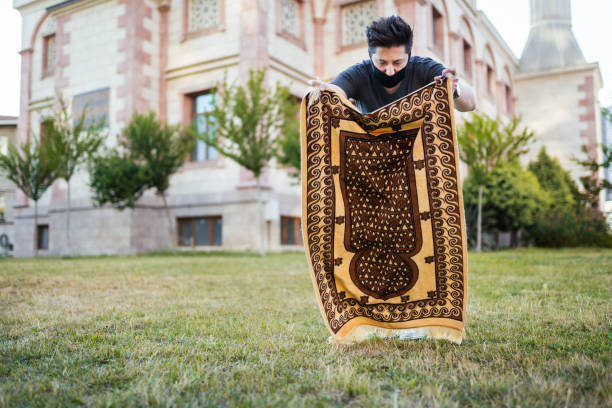There is danger in the beauty of rugs. Here are four rug hazards to be aware of and how to avoid.
Rugs are indeed beautiful. Beauty can also be dangerous. Avoiding these four common dangers if you own a carpet or plan to buy one is vital. This advice will help you to enjoy the unexpected benefits that come with rug ownership without having to take unnecessary risks.
Tripping Hazard
Tripping is not the first thing to come to mind when you think about potential rug hazards. After all, one of the most essential characteristics of rugs is their flatness. The assumption of flatness can be a trip hazard.
Over time, your rug can become less flattened by several catalysts. Rugs can wrinkle due to cleaning or exposure to moisture. The edges can become uneven or curl. This means that your carpet will no longer be flush with the ground. If your rug doesn’t lay flat, your toe can easily catch the edge and… bang! You can’t trust your carpet anymore.
Care for your rugs to prevent this danger. Clean your rugs, and keep them away from areas with high humidity. There are several ways to repair those curling corners if your rug is already a trip hazard.
Slip hazard
It’s not less dangerous to slip than it is to trip. If your rug is on a smooth surface and is not made of any particular material, it could slide when you step onto it.
A rug mat is the best way to prevent your rug from sliding. Rug pads are a great way to keep your carpet in place, no matter where you place it. A rug pad can also prevent your carpet from moving too far from your desired home.
Double-sided or masking tape circles can also secure your rug and prevent slipping. It is a more direct method but does not offer the benefits of rug padding, like protecting the floor underneath the carpet or adding cushioning.
Mold and mildew hazards
After addressing the risks of falling forward or backward, we’ll discuss a rug-related hazard that can have an entirely different impact. Mold and mildew are severe problems for natural fiber rugs. It is possible to remove mold and mildew, but it can be difficult and ineffective. It is much more effective than trying to remove mold and mildew.
To prevent mold and mildew, you should only place your natural fiber rugs where they are appropriate. The best place to put a natural fiber rug is in an excellent, dry space with lots of sunlight. Dehumidifiers are essential to use a natural fiber rug in a humid room. Don’t worry about keeping the room cool; it must only be below 80 degrees.
You can also choose a rug made of synthetic fibers. These rugs have threads resistant to mildew and mold, making them suitable for outdoor areas and your home’s most humid and hot rooms.
Fire hazard
Rugs are no more a fire risk than any other item in your house. Placing natural fiber rugs right in front of a fireplace is safe. Wool, sisal, and seagrass rugs all have wild fire resistance.
Fireproofing does not necessarily mean that they are resistant to fire. Follow the tips for any other item to avoid a rug becoming a fire risk. Avoid exposing your carpet to live wires, take care when using candles, and store excess fire in another place.

